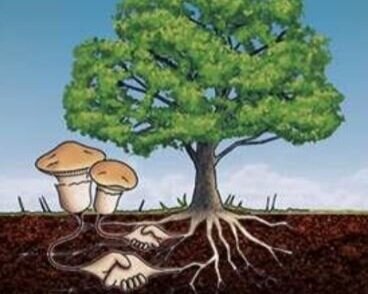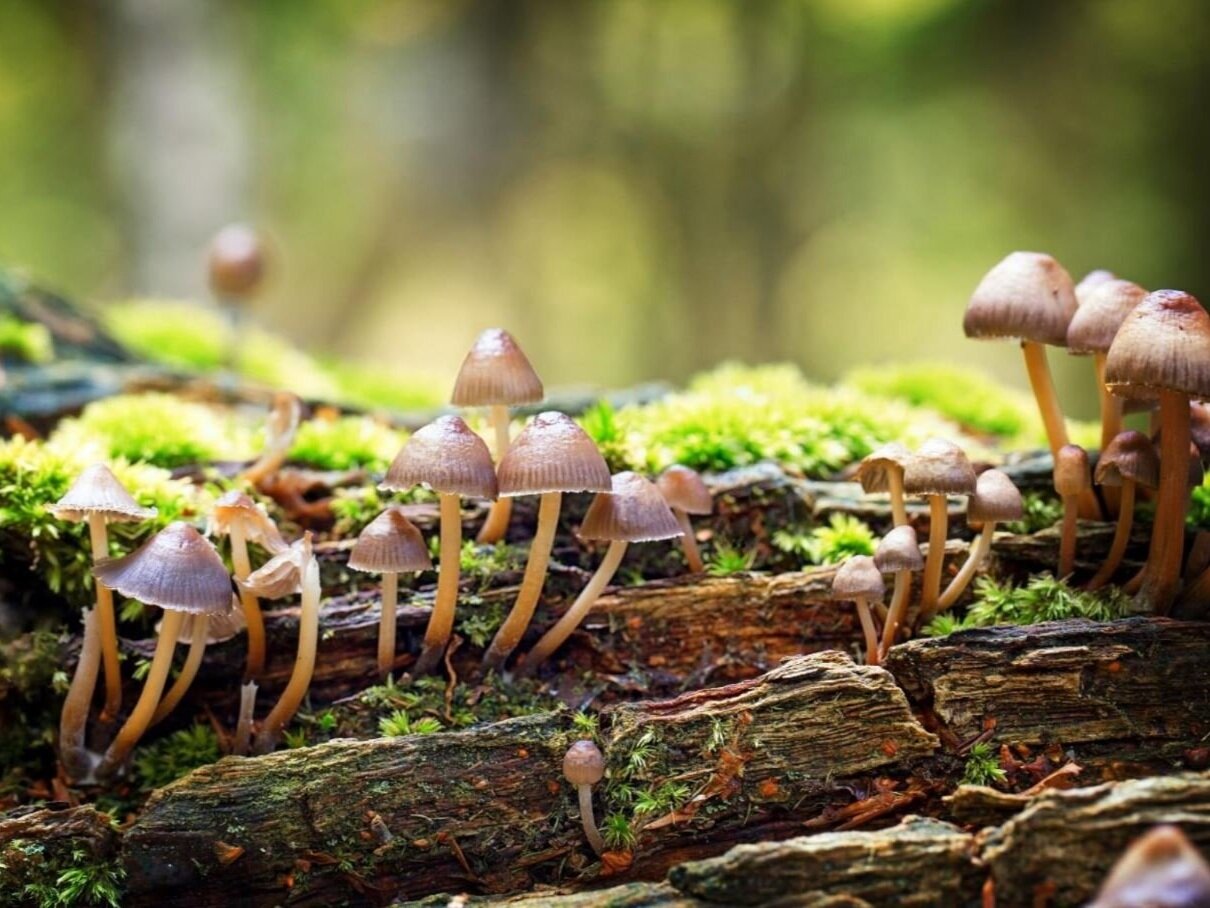Mushrooms are fungal “fruiting bodies” that produce spores and that usually (but not always) have stems and grow in soil or on wood. The “roots” of a fungus are called the mycelium and are considered the main part of the body.
Recent research has shown that this “Wood Wide Web” of mycelium connects plants in a forest, with the ability to not only transfer nutrients and water but also send messages such as insect attack warnings. They are prolific in the Pacific Northwest because of how moist our climate is – you can often find little groups of mushrooms pop up after a rain in the spring or fall.
While many mushrooms can be eaten and are very healthy, we recommend not picking any yourself without expert help. Many mushrooms can be toxic and most that you might “know” are edible have look-alikes that are not.
Types of Fungi
Not all fungi are mushrooms that you can see and pick, but all fungi play a role in a forest ecosystem. Fungi are heterotrophs (do not make their own food), and digest food external to their bodies with secreted enzymes.
There are three types of fungi in Bridle Trails State Park: decomposers, mycorrhizal species, and pathogens.
Decomposers
Most fungi act as decomposers, breaking down dead material and turning it into soil and nutrients for the forest. Common decomposers include several species that produce conks on dead trees, such as the common red-belted conk and artist’s conk. Conks are usually hard and inedible but can have important medical uses. There are other decomposers as well that constitute the FBI – fungus, bacteria, and invertebrates, like banana slugs!
Mycorrhizal fungi
These are important to plants and form symbiotic relationships (pairings between plants or animals that are helpful for both parties) with these plants. In this relationship, plants provide sugar (energy) to the fungus, which in turn provides water and nutrients to the plant. Approximately 90% of vascular plants (those with vessels to transport water and nutrients) are reliant on mycorrhizal fungi. Some common mycorrhizal species are Amanitas, including the colorful A. muscaria – the mushroom in fairy tale illustrations. Another species of interest to foragers is the Pacific golden chanterelle.
Pathogens
Pathogens are categorized as causing disease and even death in humans and other organisms. An impactful pathogenic species in the park, which does not produce mushrooms, is the common laminated root rot, which kills Douglas fir and western hemlock, but not hardwoods or western red cedar. The canopy openings caused by this fungus add to habitat diversity by allowing sunlight to get through the canopy. Another well known pathogen is Dyer’s polypore (velvet-top fungus), a “butt-rot” that is an excellent natural source of green, yellow, gold, or brown dye.
Mushrooms in the Park
The Puget Sound Mycological Society is doing a long-term survey of species in the park because Bridle Trails is a good example of older, relatively undisturbed forest in the region. Volunteers have found many interesting and new species in the park!
Each fall Mycological Society experts lead mushroom walks on our trails. On these walks, people can learn more about how to identify mushroom species, which are poisonous and edible, and which have medicinal uses . You will also learn more about the role and importance of fungi in forest ecosystems. Read about our nature walks.
CHECK OUT FALL 2020 VIDEOS WITH MYCOLOGIST DANIEL WINKLER IN BRIDLE TRAILS STATE PARK here.
More Information:
Take an e-class from Wilderness Awareness School on mushrooms here.
Fungi species found in the park here.
Fun facts about mushrooms in the park.
Photo credits: Project Learning Tree, Permaculture Research Institute, Mushroaming, Ask Nature, H. Rutherford.






